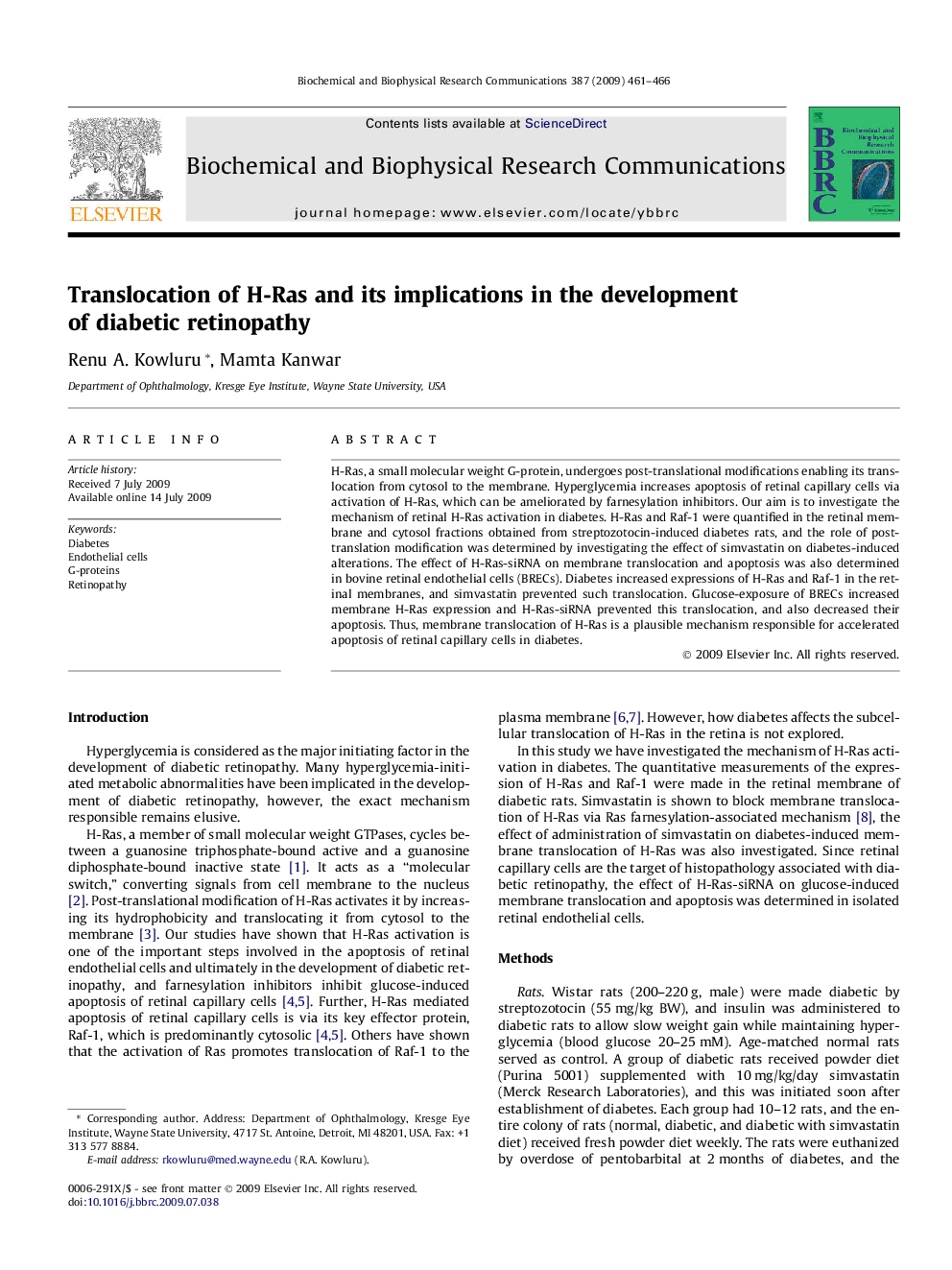| Article ID | Journal | Published Year | Pages | File Type |
|---|---|---|---|---|
| 1933114 | Biochemical and Biophysical Research Communications | 2009 | 6 Pages |
H-Ras, a small molecular weight G-protein, undergoes post-translational modifications enabling its translocation from cytosol to the membrane. Hyperglycemia increases apoptosis of retinal capillary cells via activation of H-Ras, which can be ameliorated by farnesylation inhibitors. Our aim is to investigate the mechanism of retinal H-Ras activation in diabetes. H-Ras and Raf-1 were quantified in the retinal membrane and cytosol fractions obtained from streptozotocin-induced diabetes rats, and the role of post-translation modification was determined by investigating the effect of simvastatin on diabetes-induced alterations. The effect of H-Ras-siRNA on membrane translocation and apoptosis was also determined in bovine retinal endothelial cells (BRECs). Diabetes increased expressions of H-Ras and Raf-1 in the retinal membranes, and simvastatin prevented such translocation. Glucose-exposure of BRECs increased membrane H-Ras expression and H-Ras-siRNA prevented this translocation, and also decreased their apoptosis. Thus, membrane translocation of H-Ras is a plausible mechanism responsible for accelerated apoptosis of retinal capillary cells in diabetes.
